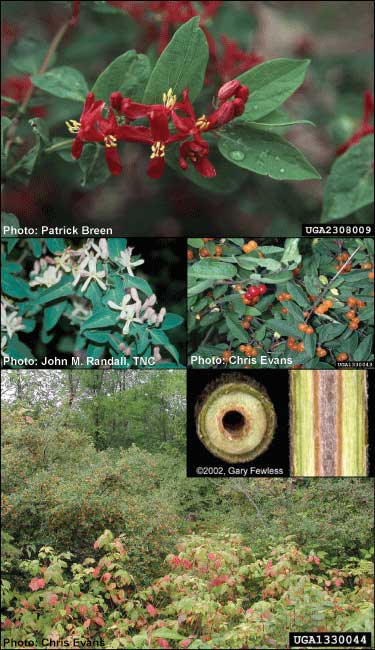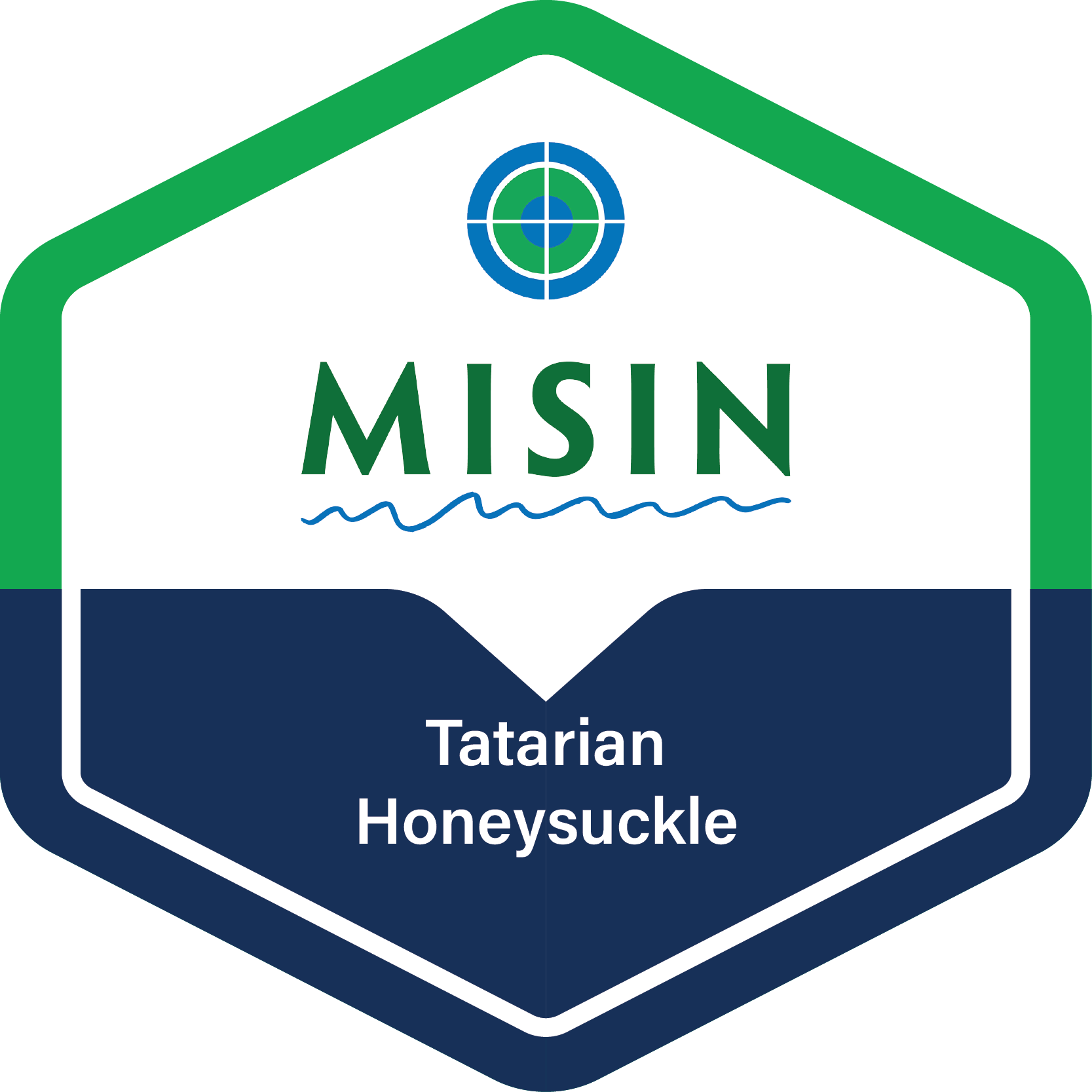Tatarian honeysuckle (Lonicera tatarica)
 Synonyms: Lonicera sibirica, Lonicera tatarica L. var. latifolia
Synonyms: Lonicera sibirica, Lonicera tatarica L. var. latifoliaCommon Names: Bush honeysuckle
Description: Common in urban areas and also occurs in rural areas where it was recommended for wildlife until its invasive traits became apparent; forms dense thickets; reduces tree and shrub regeneration, decreases overall plant diversity.
Habit: Deciduous upright to spreading shrub growing to 4 m (12 ft) tall; shallow roots.
Leaves: Simple, opposite, oval to oblong, short, hairless, leaves with pointed tips, 3-6 cm long and 2-4 cm wide with smooth margins, dark green above and paler beneath, early leaf out, long growing season.
Stems: Twigs are slender, brown to reddish with brown pith; multiple stems; numerous arching branches; older branches often hollow; bark is light gray, somewhat exfoliating.
Flowers: Small, pink to white in color, even red occasionally; tubular, fragrant, paired flowers on long (1.5-2.5 cm) stalks arising from the leaf axils; blooms May through June.
Fruit and seeds: Abundant, red or orange paired berries.
Habitat: Sun and shade tolerant; occurs in a variety of soil and moisture conditions; commonly found along roadsides and on disturbed sites; invades forest, savannas and prairies.
Reproduction: By seeds dispersed by birds.
Similar species: Natives Canadian fly honeysuckle (L. canadensis), Twinberry honeysuckle (L. involucrate), Swamp fly honeysuckle (L. oblongifolia) and Mountain fly honeysuckle (L. villosa) are relatively short and sparse in comparison with non-native species and lack hollow stems on older branches.
Monitoring and rapid response: Monitor sunny, upland sites and open forests in spring as non-native honeysuckle leafs out before natives. Begin control efforts in highest quality areas; hand pull or dig small plants, removing all roots; target large, fruit-bearing plants for control/removal; foliar spray may be effective for large populations where few natives are present; treat cut stumps with herbicide; basal bark treatment is also effective, spray bottom 18 inches of all stems. Where fuel is present, prescribed fire may provide effective control of seedlings in fire adapted communities. Credits: The Michigan Natural Features Inventory (MNFI) has partnered with MISIN to provide the information in this fact sheet. Species images and/or information were used with permission from "A Field Identification Guide to Invasive Plants in Michigan's Natural Communities" and "A Field Guide to Invasive Plants of Aquatic and Wetland Habitats for Michigan.
Common Name: | Tatarian honeysuckle |
Scientific Name: | Lonicera tatarica |
Family: | Caprifoliaceae (Honeysuckle) |
Duration: | Perennial |
Habit: | Shrubs |
USDA Symbol: | LOTA |
 View Species Course |
|
